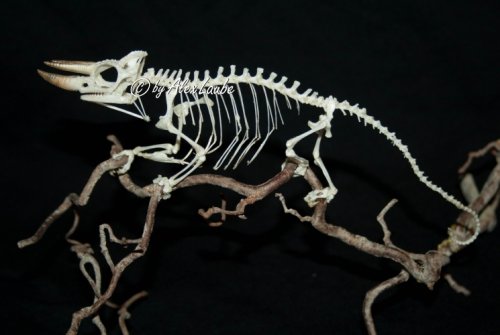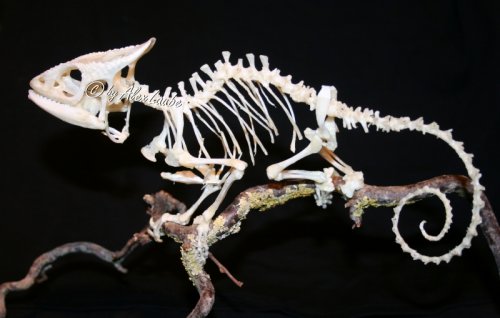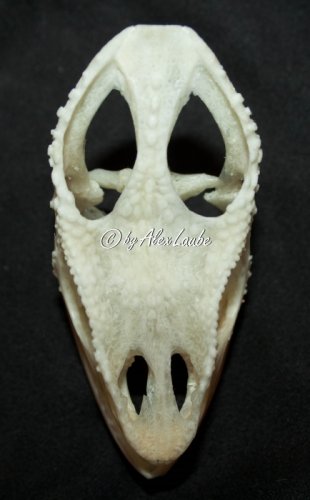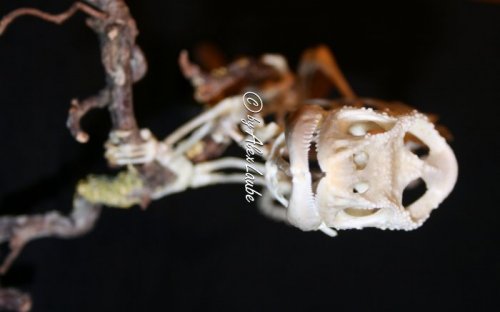Navigation
Install the app
How to install the app on iOS
Follow along with the video below to see how to install our site as a web app on your home screen.
Note: This feature may not be available in some browsers.
More options
You are using an out of date browser. It may not display this or other websites correctly.
You should upgrade or use an alternative browser.
You should upgrade or use an alternative browser.
Chameleon skeletons
- Thread starter Alexl
- Start date
Niels Pedersen
Established Member
yes, Alex is the best.
If you want to see more skeleton and skull pictures, visit our site
http://kamaeleoner.dk/generelt-om-kamaeleoner/24-morfologi/567-skelettet.html
More articles about the anatomy:
http://kamaeleoner.dk/generelt-om-kamaeleoner/24-morfologi.html
If you want to see more skeleton and skull pictures, visit our site
http://kamaeleoner.dk/generelt-om-kamaeleoner/24-morfologi/567-skelettet.html
More articles about the anatomy:
http://kamaeleoner.dk/generelt-om-kamaeleoner/24-morfologi.html
Alexl
Avid Member
Happy new year everyone 
This is a Calumma parsonii female. She was about two years old and suffered from a completely malformed spine since hatched. Maybe you can see the "double headed" ribs and notice those very crazy shaped vertebrae. Some seem to be flat residues and others have strange appendages. But this chameleon could climb around without problems, was cared for quite well, she only had an somewhat odd looking back. In the end she probably died from heart failure. The spine unfortunately wasn't the only organ to be malformed inside her body.
This is a Calumma parsonii female. She was about two years old and suffered from a completely malformed spine since hatched. Maybe you can see the "double headed" ribs and notice those very crazy shaped vertebrae. Some seem to be flat residues and others have strange appendages. But this chameleon could climb around without problems, was cared for quite well, she only had an somewhat odd looking back. In the end she probably died from heart failure. The spine unfortunately wasn't the only organ to be malformed inside her body.
Attachments
Alexl
Avid Member
I'm glad there are still people enjoying the pictures and learning about those fascinating creatures.  Wasn't my idea to continue this thread over years at the beginning, but as long as members love to see new work...
Wasn't my idea to continue this thread over years at the beginning, but as long as members love to see new work...
Unfortunately, I had not that much time the last months. Up to date, I'm trying to preprare a young rattlesnake and a small monitor lizard. Hopefully those will be ready soon, then I can go on with another melleri female.
Unfortunately, I had not that much time the last months. Up to date, I'm trying to preprare a young rattlesnake and a small monitor lizard. Hopefully those will be ready soon, then I can go on with another melleri female.
Mmcbain1
New Member
I'm glad there are still people enjoying the pictures and learning about those fascinating creatures.Wasn't my idea to continue this thread over years at the beginning, but as long as members love to see new work...
Unfortunately, I had not that much time the last months. Up to date, I'm trying to preprare a young rattlesnake and a small monitor lizard. Hopefully those will be ready soon, then I can go on with another melleri female.
YES we enjoy them and please continue the thread. I have a male calyptratus that has been in the freezer for 10 years and one day I swear I will try and make a beautiful skeleton chameleon. I have read the whole thread, I understand how you clean the bones and you say you use a jewelry glue, any other tips ? I think you should create a blog tutorial on how to make a chameleon skeleton
Celebrianne
New Member
A crazy question
I found this site today trying to get an unusual question answered.
I'm wondering if a paleontologist can tell whether a reptile could curl its tail based on just the bones.
My first thought was to see if this can be seen in chameleons since we know they can curl their tails. But no one on the web seems to care about mentioning this, so I decided to look for some people who would care!
I see that chameleon tailbones are very tiny, but can you tell they are shaped to curl up? or are they more or less the same as other reptiles and it all depends on the ligaments and muscles?
It was delightful to find this thread and all I can say is, herzlichen Glückwünsche, Alexl! Was für tolle Skelette. Dass hat bestimmt eine Menge Arbeit gemacht.
I found this site today trying to get an unusual question answered.
I'm wondering if a paleontologist can tell whether a reptile could curl its tail based on just the bones.
My first thought was to see if this can be seen in chameleons since we know they can curl their tails. But no one on the web seems to care about mentioning this, so I decided to look for some people who would care!
I see that chameleon tailbones are very tiny, but can you tell they are shaped to curl up? or are they more or less the same as other reptiles and it all depends on the ligaments and muscles?
It was delightful to find this thread and all I can say is, herzlichen Glückwünsche, Alexl! Was für tolle Skelette. Dass hat bestimmt eine Menge Arbeit gemacht.
Alexl
Avid Member
Hi Celebrianne,
of cause you can tell from the bones whether an animal can curl its tail or not in principle. Vertebrae have different shapes and variably formed appendages in different species, thereby you can identify a species by its vertebrae - or at least, you'd have a quite good hint which animal it was. A chameleon's tail can only be curled downwards, but not more than a slight bow to the other direction due to their vertebrae appendages. Muscles and ligaments are big part of the functional use, of cause; but the main part is made by the vertebrae form. I'll take a look for some pictures of different spines from snakes, chameleons and other lizards.
Thanks, yes it was a lot work.
It wasn't me.
of cause you can tell from the bones whether an animal can curl its tail or not in principle. Vertebrae have different shapes and variably formed appendages in different species, thereby you can identify a species by its vertebrae - or at least, you'd have a quite good hint which animal it was. A chameleon's tail can only be curled downwards, but not more than a slight bow to the other direction due to their vertebrae appendages. Muscles and ligaments are big part of the functional use, of cause; but the main part is made by the vertebrae form. I'll take a look for some pictures of different spines from snakes, chameleons and other lizards.
It was delightful to find this thread and all I can say is, herzlichen Glückwünsche, Alexl! Was für tolle Skelette. Dass hat bestimmt eine Menge Arbeit gemacht.
Thanks, yes it was a lot work.
Are you the same person asking me for chameleon skeletons.
It wasn't me.
Celebrianne
New Member
Thanks for the quick response
I figured you could tell from the bones, but I've never run into information saying as much.
Looking forward to your pictures, and thanks again!
I figured you could tell from the bones, but I've never run into information saying as much.
Looking forward to your pictures, and thanks again!
DavidBuchan
New Member
I'm glad there are still people enjoying the pictures and learning about those fascinating creatures.Wasn't my idea to continue this thread over years at the beginning, but as long as members love to see new work...
Unfortunately, I had not that much time the last months. Up to date, I'm trying to preprare a young rattlesnake and a small monitor lizard. Hopefully those will be ready soon, then I can go on with another melleri female.
I'm still watching and enjoying too









